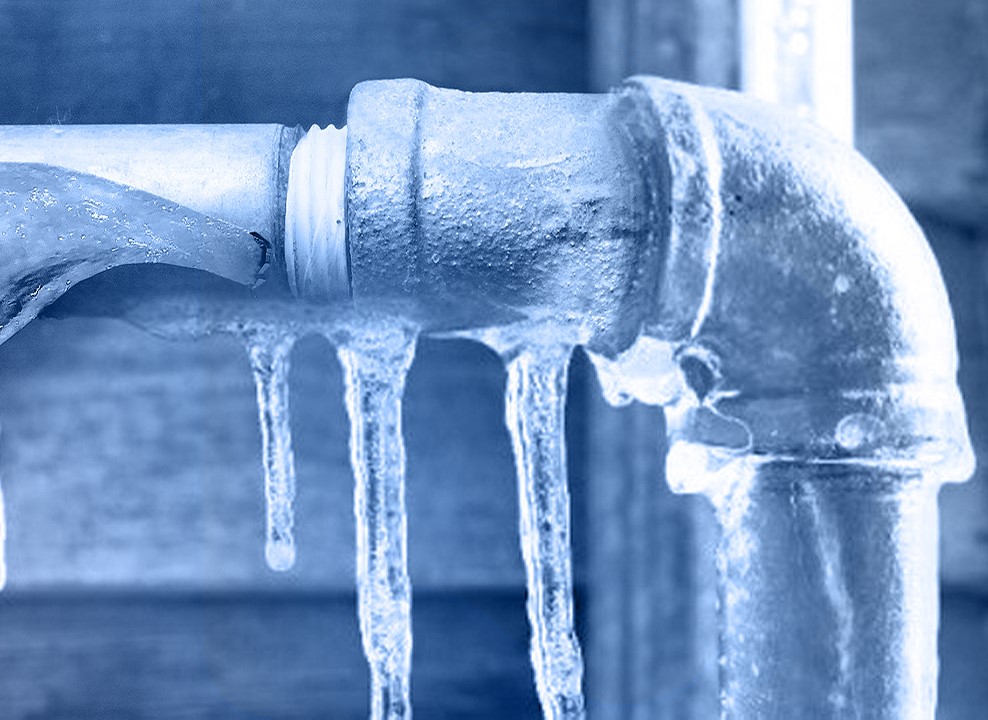How to Safeguard Your Pipes from Cold Weather: Expert Advice
How to Safeguard Your Pipes from Cold Weather: Expert Advice
Blog Article
Each person may have their unique assumption when it comes to 6 Ways to Prevent Frozen Pipes.

Cold weather can ruin your pipes, particularly by freezing pipelines. Right here's how to prevent it from taking place and what to do if it does.
Introduction
As temperature levels decline, the threat of icy pipes increases, potentially leading to expensive repairs and water damages. Comprehending how to stop icy pipelines is essential for property owners in cool environments.
Prevention Tips
Insulating susceptible pipelines
Cover pipes in insulation sleeves or make use of warm tape to secure them from freezing temperature levels. Concentrate on pipes in unheated or external locations of the home.
Heating methods
Maintain indoor rooms effectively heated up, particularly locations with pipes. Open cabinet doors to enable cozy air to circulate around pipes under sinks.
Just how to identify frozen pipelines
Seek reduced water flow from taps, uncommon smells or sounds from pipelines, and noticeable frost on exposed pipelines.
Long-Term Solutions
Architectural modifications
Take into consideration rerouting pipes away from exterior walls or unheated locations. Include added insulation to attic rooms, cellars, and crawl spaces.
Upgrading insulation
Invest in high-grade insulation for pipelines, attics, and wall surfaces. Proper insulation aids preserve constant temperatures and minimizes the danger of icy pipes.
Shielding Outside Plumbing
Yard tubes and exterior faucets
Separate and drain pipes garden tubes before wintertime. Install frost-proof spigots or cover outside taps with insulated caps.
Comprehending Icy Pipelines
What creates pipelines to freeze?
Pipes ice up when exposed to temperatures below 32 ° F (0 ° C) for prolonged periods. As water inside the pipelines ices up, it broadens, putting pressure on the pipeline walls and possibly triggering them to break.
Threats and problems
Frozen pipes can result in water system disruptions, residential or commercial property damage, and costly repair work. Burst pipes can flooding homes and create substantial architectural damages.
Indications of Frozen Pipes
Determining icy pipes early can prevent them from rupturing.
What to Do If Your Pipelines Freeze
Immediate activities to take
If you presume frozen pipes, maintain faucets open to relieve stress as the ice melts. Use a hairdryer or towels taken in warm water to thaw pipes gradually.
Final thought
Preventing frozen pipelines requires positive measures and fast feedbacks. By understanding the causes, indications, and preventive measures, homeowners can shield their pipes throughout winter.
5 Ways to Prevent Frozen Pipes
Drain Outdoor Faucets and Disconnect Hoses
First, close the shut-off valve that controls the flow of water in the pipe to your outdoor faucet. Then, head outside to disconnect and drain your hose and open the outdoor faucet to allow the water to completely drain out of the line. Turn off the faucet when done. Finally, head back to the shut-off valve and drain the remaining water inside the pipe into a bucket or container. Additionally, if you have a home irrigation system, you should consider hiring an expert to clear the system of water each year.
Insulate Pipes
One of the best and most cost-effective methods for preventing frozen water pipes is to wrap your pipes with insulation. This is especially important for areas in your home that aren’t exposed to heat, such as an attic. We suggest using foam sleeves, which can typically be found at your local hardware store.
Keep Heat Running at 65
Your pipes are located inside your walls, and the temperature there is much colder than the rest of the house. To prevent your pipes from freezing, The Insurance Information Institute suggests that you keep your home heated to at least 65 degrees, even when traveling. You may want to invest in smart devices that can keep an eye on the temperature in your home while you’re away.
Leave Water Dripping
Moving water — even a small trickle — can prevent ice from forming inside your pipes. When freezing temps are imminent, start a drip of water from all faucets that serve exposed pipes. Leaving a few faucets running will also help relieve pressure inside the pipes and help prevent a rupture if the water inside freezes.
Open Cupboard Doors
Warm your kitchen and bathroom pipes by opening cupboards and vanities. You should also leave your interior doors ajar to help warm air circulate evenly throughout your home.

I was shown that article on How To Avoid Freezing Pipes through an acquaintance on our other web property. Do you know about another individual who is looking into the subject? Take a moment to share it. We treasure your readership.
See Availability Report this page